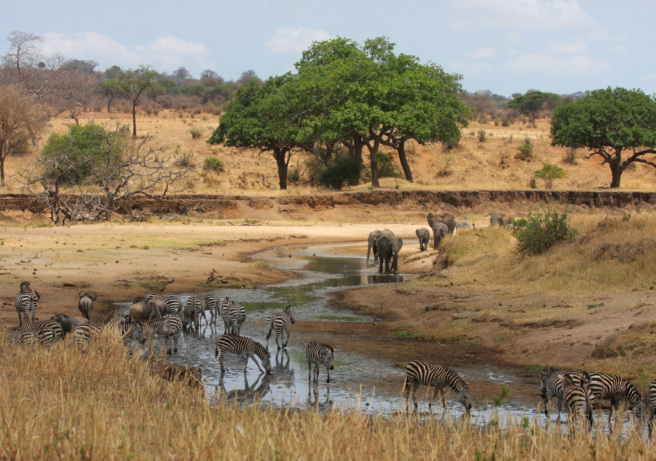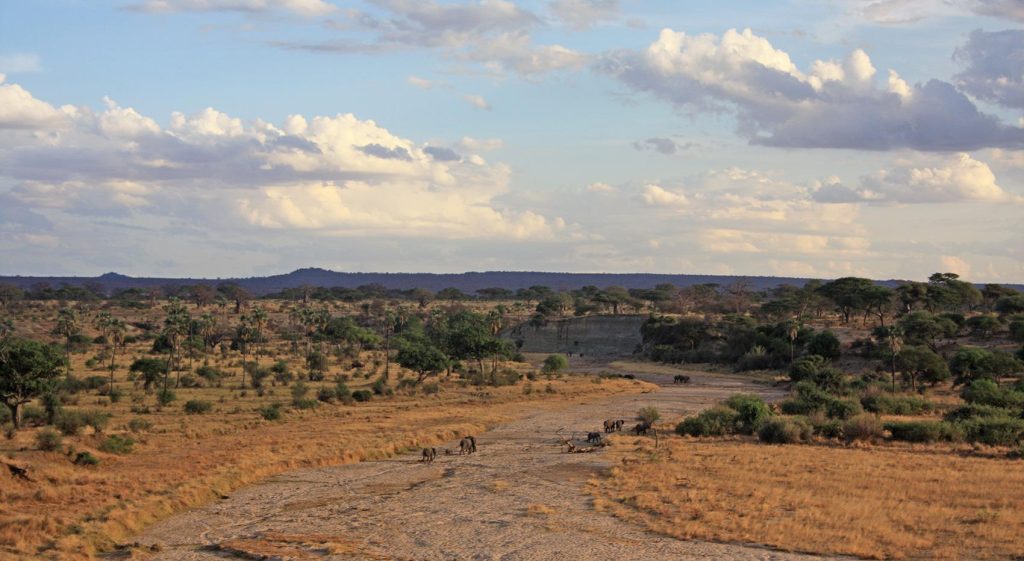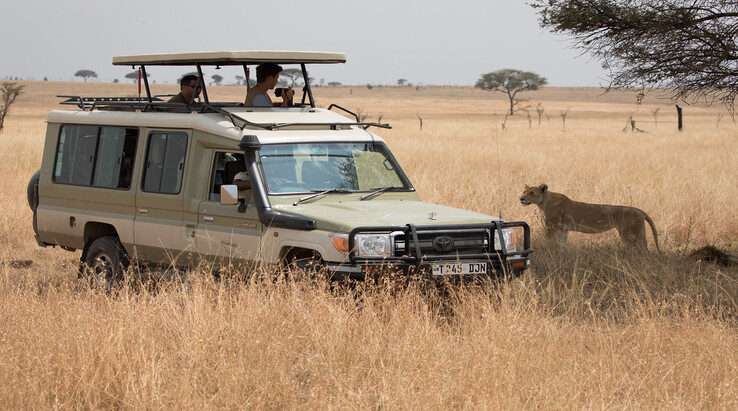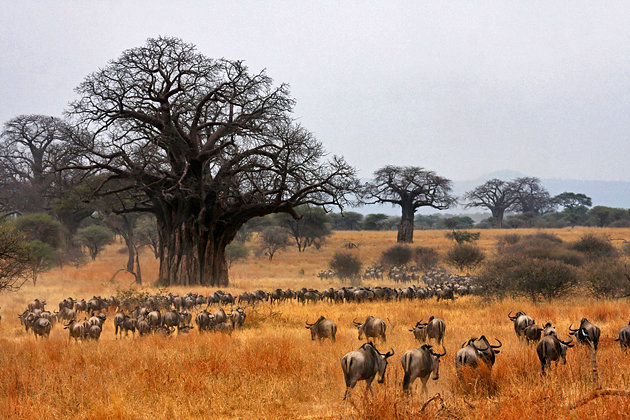The Best Time to Visit Tarangire: Understanding the Dry Season




Tarangire National Park, one of Tanzania’s most captivating wildlife destinations, offers unique safari experiences throughout the year. However, understanding the Tarangire Dry Season is key to planning your visit for the best wildlife sightings. This period, which spans from late June to October, brings with it distinct advantages that make it one of the most sought-after times to visit. In this guide, we will explore the significance of the Tarangire Dry Season, highlighting what makes this time of year ideal for a safari adventure.
1. The Tarangire Dry Season: An Overview
The Tarangire Dry Season corresponds to the colder months of the year in Tanzania, typically between June and October. During this time, the park experiences reduced rainfall, and the landscape transforms into a golden expanse of dry savannah. The absence of rain leads to fewer green areas and makes the park’s water sources more concentrated, which has a profound impact on wildlife behavior and viewing opportunities.
2. Concentration of Wildlife Around Waterholes
One of the biggest draws of the Tarangire Dry Season is the concentration of wildlife around the park’s water sources. With limited access to fresh water, animals are drawn to the Tarangire River and its surrounding waterholes, creating spectacular scenes of animals gathering to drink. This makes it one of the best times for safari-goers to witness large herds of elephants, zebras, wildebeest, giraffes, and buffaloes, among other species.
For example, the park is famous for its large elephant herds, and during the dry season, these majestic creatures congregate around the river in numbers that are a sight to behold. Similarly, predators like lions, leopards, and cheetahs are drawn to the waterholes, taking advantage of the prey that comes to drink. This concentration of wildlife provides excellent opportunities for observing predator-prey interactions.
3. Optimal Wildlife Viewing
As the Tarangire Dry Season causes vegetation to thin out, visibility improves significantly. The dry season’s sparse foliage and shorter grass make it easier to spot animals from a distance, even when they are deep within the park’s expansive landscapes. This is especially beneficial for spotting large mammals, such as elephants and giraffes, as they become more visible in the otherwise thick bush.
Moreover, the Tarangire Dry Season coincides with the cooler temperatures of the southern hemisphere’s winter months. This is often considered a more comfortable time to travel, with daytime temperatures remaining warm but not unbearably hot, and cooler evenings and nights.
4. Great for Bird Watching
Though the dry season is most famous for large mammal sightings, it also offers excellent bird-watching opportunities. During the Tarangire Dry Season, migratory birds from Europe and other regions flock to the park, adding to the resident bird species. The dry season provides clear skies, making it easier to spot birds like the endangered yellow-collared lovebird, as well as ostriches, hornbills, and vultures.
Many of the park’s resident species, such as the pale-breasted warbler and the white-bellied go-away-bird, are active throughout the dry months. This makes it a great time for bird enthusiasts to explore the park’s different habitats, from the riverbanks to the acacia woodlands.
5. The Best Time for Photography
The Tarangire Dry Season offers some of the best opportunities for wildlife photography. The contrast between the dry, golden grasses and the vibrant green of the riverine areas provides a stunning backdrop for capturing the drama of the African bush. The clear skies and vibrant colors are perfect for wide-angle shots of the landscape, while the increased animal activity around waterholes offers opportunities to capture dynamic moments, such as herds of elephants drinking or predators stalking their prey.
The lower vegetation also makes it easier to get close-up shots of animals, and the stillness of the dry season allows for clearer, crisper photographs without the haziness created by the rains.
6. The Elephant Paradise
The Tarangire Dry Season is especially popular among elephant enthusiasts. Tarangire is known for its impressive elephant population, and during the dry months, the park sees a significant influx of these majestic creatures. The Tarangire Dry Season sees elephant herds of all sizes descending upon the park, creating some of the most iconic safari moments. These herds are often seen foraging on the dry savannah or drinking from the Tarangire River, making for fantastic photographic opportunities.
The dry season is also when elephants tend to congregate in large groups, sometimes numbering in the hundreds. Visitors are likely to witness social interactions, including the nurturing of calves and the dominance displays of older bulls. The sight of such large numbers of elephants is one of the defining features of visiting Tarangire during the dry season.
7. Limited Crowds and Quiet Safari Experience
Though the Tarangire Dry Season attracts wildlife enthusiasts and photographers, it is still relatively less crowded compared to other major parks like Serengeti or Ngorongoro. As one of Tanzania’s less visited national parks, even during peak season, Tarangire offers a more tranquil and intimate safari experience. Visitors can enjoy the beauty of the park without feeling crowded or rushed, allowing for a more relaxed and personal connection with the wilderness.
8. Tarangire Dry Season and Accommodation Options
During the Tarangire Dry Season, a wide range of accommodation options is available, from luxurious lodges to more budget-friendly campsites. Many of the lodges and tented camps in the area are designed to offer incredible views of wildlife, with some even positioned near waterholes or along the Tarangire River. This proximity to waterholes allows guests to enjoy close-up views of animals as they come to drink throughout the day and night.
Lodges in the park also offer a higher level of comfort, with many offering amenities like swimming pools, gourmet dining, and guided safari tours. With fewer crowds during the dry season, it is easier to secure your preferred accommodations, especially for those looking for a more exclusive safari experience.
9. Tarangire in the Wet Season vs. Dry Season
While the Tarangire Dry Season offers many advantages, it is also important to understand the differences between this period and the wet season. The wet season, which occurs from November to April, is when the park experiences its lush green landscapes and migratory animals. However, the increased rainfall during the wet season often makes wildlife sightings more challenging due to thicker vegetation, and many roads can become impassable.
In contrast, the dry season offers better access to the park’s remote areas, clearer views of wildlife, and a more predictable safari experience. However, some travelers might prefer the quieter, greener landscapes of the wet season, especially bird watchers and those interested in observing the calving season.
10. Conclusion: The Perfect Time for a Safari
The Tarangire Dry Season is the ideal time for wildlife enthusiasts looking to experience a truly memorable safari in Tanzania. The concentration of wildlife around water sources, combined with the park’s dramatic landscapes and the enhanced visibility due to the dry conditions, ensures a fulfilling and exciting safari experience. Whether you’re aiming to photograph the majestic elephants, witness predator-prey interactions, or simply enjoy the peaceful atmosphere, visiting Tarangire during the dry season promises an unforgettable adventure in one of Africa’s most remarkable national parks.

One Comment